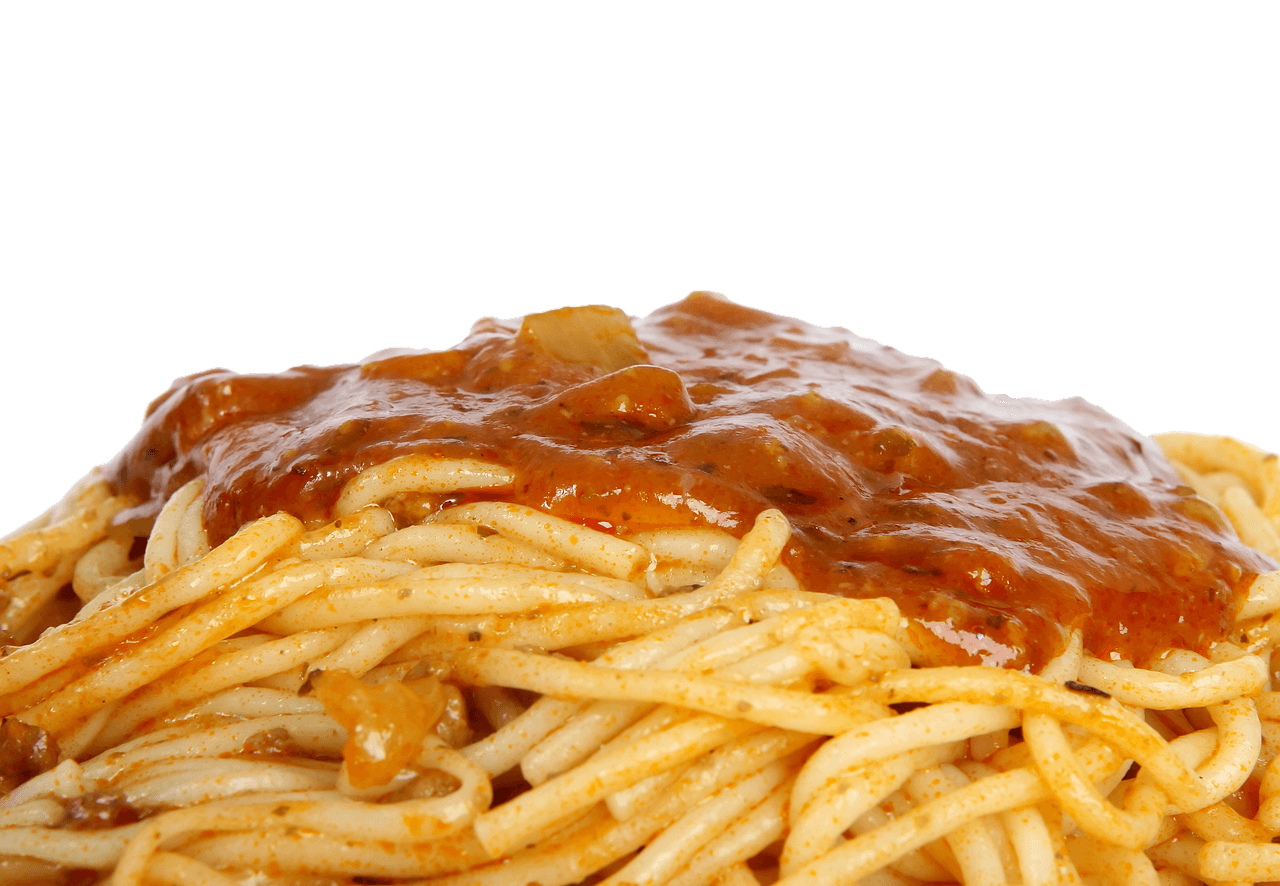Ragù vs Bolognese sauce are two beloved meat-based pasta sauces in Italian cuisine, each with its own distinct flavors, textures, and cultural significance. Ragù, a slow-cooked meat sauce, originated in Emilia-Romagna and Campania and is a rich, hearty tomato-based concoction that accompanies pasta dishes like tagliatelle or pappardelle. It is crafted from a medley of ground meats, aromatic vegetables, tomatoes, wine, and broth, with a long simmering process that allows flavors to meld together.
On the other hand, Bolognese sauce, also known as “ragù alla bolognese,” hails from Bologna in Northern Italy. It shares some similarities with traditional ragù but has its own distinct identity and preparation method. Bolognese sauce is characterized by finely diced ingredients, including minced beef, pancetta, onions, carrots, celery, tomato paste, wine, and milk or cream. It also incorporates dairy to create a luxurious, creamy texture that coats the pasta with velvety richness.
In essence, while both ragù and Bolognese sauce are meat-based pasta sauces originating from Italy, they differ in their ingredients, preparation methods, textures, and flavors. Understanding these differences is crucial for appreciating the nuances of Italian cuisine and selecting the perfect sauce to elevate your pasta dish to culinary excellence.
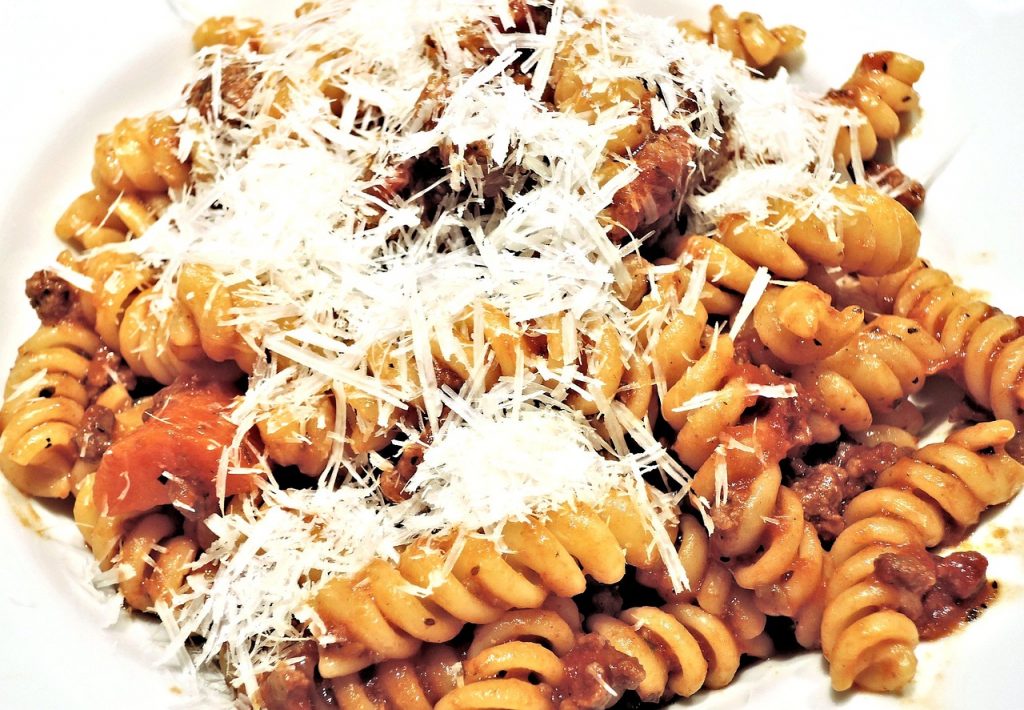
Contents
- 1 Ragù vs Bolognese Sauce–Origins and History
- 2 Ingredients
- 3 Preparation Method
- 4 Texture and Consistency
- 5 Ragù and Bolognese Sauce–Flavor Profile
- 6 Ragù vs Bolognese Sauce–Cultural Significance
- 7 Pairing with Pasta
- 8 Ragù and Bolognese Sauce–Nutritional Content
- 9 Ragù and Bolognese Sauce–Versatility in Cooking
- 10 Popularity and Preferences
- 11 Comparison in Taste and Texture
- 12 Which One is Better?
- 13 Conclusion
- 14 FAQ
Ragù vs Bolognese Sauce–Origins and History
Origins of Ragù
The origins of ragù can be traced back to the rich culinary traditions of Italy, with its roots firmly planted in the fertile soil of Emilia-Romagna and Campania. The term “ragù” itself is derived from the French word “ragoût,” which refers to a stew or meat-based sauce. However, the concept of slow-cooking meat with vegetables and seasonings to create a flavorful sauce predates its French counterpart and has been a staple of Italian cuisine for centuries.
Historically, ragù encompassed a broad spectrum of meat-based sauces, varying in ingredients and cooking methods across different regions of Italy. In Emilia-Romagna, particularly in cities like Bologna and Modena, ragù gained prominence as a hearty accompaniment to pasta, polenta, or gnocchi. The region’s fertile plains provided an abundance of ingredients, including tender meats, aromatic vegetables, and ripe tomatoes, which formed the foundation of traditional ragù recipes.
In Campania, a southern region known for its vibrant flavors and Mediterranean influences, ragù took on a slightly different character. Here, ragù alla napoletana became a beloved staple, featuring a tomato-based sauce simmered with various cuts of meat, often including pork ribs, sausages, and beef.
Over time, as Italian immigrants carried their culinary traditions to other parts of the world, ragù evolved and adapted to suit local tastes and ingredients. Today, ragù remains a cherished emblem of Italian comfort food, celebrated for its rich flavors, slow-cooked goodness, and soul-warming appeal.
Origins of Bolognese Sauce
Bolognese sauce, known in Italian as “ragù alla bolognese,” owes its name and heritage to the historic city of Bologna in Northern Italy. Renowned for its medieval architecture, rich cultural heritage, and culinary prowess, Bologna is often hailed as the gastronomic capital of Italy.
The origins of Bolognese sauce can be traced back to the late 18th century, during a period of culinary innovation and experimentation in Bologna. As the city flourished as a center of trade and commerce, its cuisine reflected a fusion of local traditions with influences from neighboring regions and beyond.
Bolognese sauce emerged as a refinement of the rustic meat sauces that were prevalent in Emilia-Romagna at the time. Unlike traditional ragù, which featured coarsely chopped or ground meats, Bolognese sauce was characterized by finely minced beef, pancetta, and aromatic vegetables, meticulously cooked to achieve a velvety texture and harmonious flavors.
Historical records suggest that the earliest iterations of Bolognese sauce were served with fresh egg pasta, such as tagliatelle or lasagna, which provided the perfect canvas for showcasing the sauce’s richness and depth of flavor. Over time, Bolognese sauce gained popularity beyond the borders of Bologna, becoming synonymous with Italian cuisine and inspiring countless variations and interpretations around the world.
Historical Context
To truly appreciate the origins of ragù and Bolognese sauce, it is essential to understand the historical context in which these culinary traditions evolved. Italy’s rich tapestry of regional cuisines reflects centuries of cultural exchange, migration, and conquest, with each region boasting its own unique culinary heritage.
In the case of ragù, its origins can be traced to the agrarian traditions of Emilia-Romagna and Campania, where farmers and peasants relied on slow-cooking techniques to transform humble ingredients into nourishing meals. The emergence of ragù as a pasta sauce coincided with the rise of pasta consumption in Italy, fueled by the introduction of tomatoes from the New World in the 16th century.
Similarly, Bolognese sauce reflects the culinary ingenuity of Northern Italy, where fertile plains and favorable climatic conditions provided an abundance of fresh produce and livestock. The development of Bolognese sauce as a refined meat sauce paralleled the growth of Bologna as a center of commerce and culture, with wealthy merchants and aristocrats patronizing local trattorias and osterias.
Overall, the origins of ragù and Bolognese sauce are deeply intertwined with Italy’s culinary history, shaped by factors such as geographical location, cultural influences, and socioeconomic dynamics. Understanding the historical context allows us to appreciate these iconic sauces not just as recipes but as living artifacts of Italy’s rich gastronomic heritage.
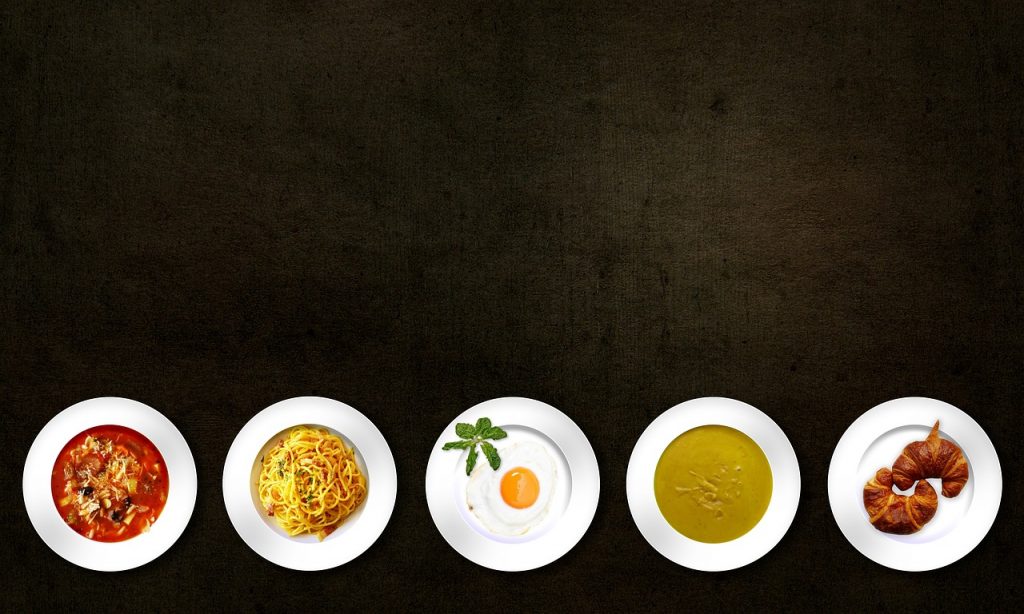
Ingredients
Components of Ragù
Ragù, with its origins deeply rooted in Italian culinary tradition, comprises a rich and flavorful combination of ingredients carefully crafted to tantalize the taste buds. While variations exist across different regions and households, several key components form the backbone of this beloved meat sauce:
- Meat: Ragù typically features a blend of ground meats, such as beef, pork, and veal. Each type of meat contributes its unique flavor and texture to the sauce, creating a harmonious balance of savory goodness.
- Aromatic Vegetables: Onions, carrots, and celery, collectively known as “soffritto” in Italian cuisine, form the aromatic base of ragù. These vegetables are finely diced and sautéed in olive oil to release their natural sweetness and enhance the depth of flavor in the sauce.
- Tomatoes: Tomatoes, either fresh or canned, play a crucial role in imparting color, acidity, and a hint of sweetness to ragù. Depending on personal preference and regional variations, some recipes may call for tomato paste, crushed tomatoes, or even sun-dried tomatoes to intensify the tomato flavor.
- Broth: Broth or stock, whether homemade or store-bought, provides additional depth and richness to ragù, creating a luscious sauce with a velvety texture. Beef or chicken broth is commonly used, although vegetable broth can be substituted for a lighter alternative.
- Herbs and Spices: Aromatic herbs such as bay leaves, thyme, and rosemary, along with spices like black pepper and nutmeg, infuse ragù with layers of flavor and fragrance. These seasonings are added sparingly to complement the natural flavors of the ingredients without overpowering them.
Ingredients of Bolognese Sauce
Bolognese sauce, also known as “ragù alla bolognese,” is a regional specialty originating from the city of Bologna in Northern Italy. Unlike traditional ragù, Bolognese sauce incorporates a few distinct ingredients that set it apart and give it its signature flavor and texture:
- Finely Minced Beef: Unlike ragù, which often uses coarsely ground meats, Bolognese sauce calls for finely minced beef, which contributes to its smooth and velvety texture. The beef is browned gently to develop flavor before simmering in the sauce.
- Pancetta: Pancetta, an Italian cured meat similar to bacon but not smoked, adds richness and depth of flavor to Bolognese sauce. It is finely diced and sautéed with the onions, carrots, and celery to impart a savory note to the sauce.
- Milk or Cream: One of the distinguishing features of Bolognese sauce is the addition of milk or cream, which lends it a luxurious creaminess and helps mellow the acidity of the tomatoes. The dairy also contributes to the sauce’s rich and velvety consistency.
- Tomato Paste: While both ragù and Bolognese sauce contain tomatoes, Bolognese sauce typically incorporates tomato paste to intensify the tomato flavor and deepen the color of the sauce. The tomato paste is caramelized slightly to enhance its sweetness before other ingredients are added.
- Nutmeg: A hint of nutmeg, either grated fresh or ground, is often included in Bolognese sauce to impart a subtle warmth and aromatic complexity. The nutmeg enhances the overall flavor profile of the sauce without overpowering the other ingredients.
Key Differences in Ingredients
While ragù and Bolognese sauce share some common ingredients, such as meat, tomatoes, and aromatic vegetables, there are several key differences that distinguish them:
- Meat Preparation: In ragù, the meat is typically coarsely ground and slow-cooked to tender perfection, resulting in a hearty and rustic texture. In contrast, Bolognese sauce uses finely minced beef, which creates a smoother and more velvety consistency.
- Inclusion of Pancetta: Bolognese sauce often incorporates pancetta, a type of Italian cured meat, to add richness and depth of flavor. Ragù may or may not include pancetta, depending on regional variations and personal preferences.
- Use of Milk or Cream: Bolognese sauce is characterized by the addition of milk or cream, which contributes to its creamy texture and subtle sweetness. Ragù, on the other hand, typically does not contain dairy products, resulting in a sauce with a heartier and more robust flavor.
- Tomato Paste vs. Tomatoes: While both sauces contain tomatoes, Bolognese sauce often includes tomato paste to intensify the tomato flavor and deepen the color of the sauce. Ragù may rely solely on fresh or canned tomatoes for its tomato base, resulting in a sauce with a brighter and more vibrant color.
- Seasonings: Bolognese sauce may include a hint of nutmeg to enhance its flavor profile, whereas ragù typically incorporates a blend of aromatic herbs and spices such as bay leaves, thyme, and rosemary. These seasonings contribute to the distinctive taste and aroma of each sauce.
Overall, while ragù and Bolognese sauce share a common heritage and serve as iconic representations of Italian cuisine, their unique ingredients and flavor profiles offer distinct culinary experiences that cater to different preferences and occasions. Whether you prefer the rustic simplicity of ragù or the creamy elegance of Bolognese sauce, exploring the nuances of these beloved sauces is sure to elevate your culinary repertoire.
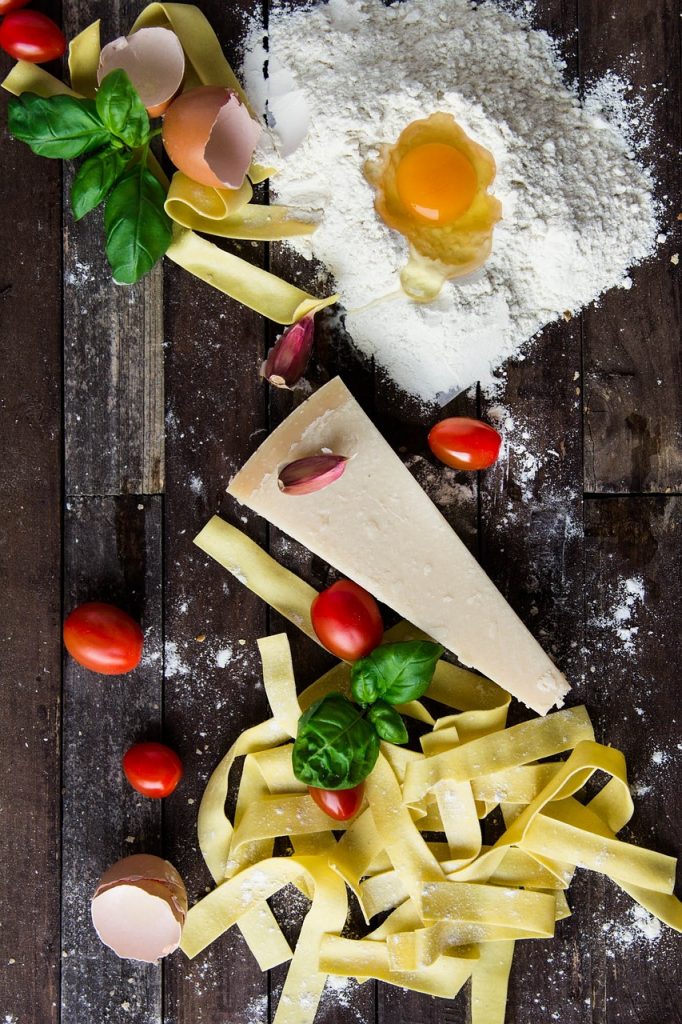
Preparation Method
Cooking Techniques for Ragù
Ragù, with its rich and complex flavors, requires a slow and methodical cooking approach to allow the ingredients to meld together and develop depth. The following cooking techniques are commonly employed in preparing traditional ragù:
- Sautéing Aromatic Vegetables: Begin by finely chopping onions, carrots, and celery to create the classic Italian soffritto. Heat olive oil in a large, heavy-bottomed pot or Dutch oven over medium heat, then add the soffritto and cook until softened and fragrant, stirring occasionally to prevent burning.
- Browning the Meat: Once the vegetables are tender, add the ground meats (beef, pork, and/or veal) to the pot, breaking them apart with a wooden spoon to distribute evenly. Allow the meat to brown gently, stirring occasionally to ensure even cooking and caramelization.
- Deglazing with Wine: Pour a splash of dry red wine, such as Chianti or Sangiovese, into the pot to deglaze the pan, scraping up any browned bits stuck to the bottom. The wine adds depth of flavor and acidity to the sauce, balancing the richness of the meat and vegetables.
- Simmering with Tomatoes: Add crushed tomatoes, tomato paste, or canned tomato sauce to the pot, along with broth or stock to achieve the desired consistency. Season with salt, pepper, and a pinch of sugar to enhance the natural sweetness of the tomatoes. Bring the mixture to a gentle simmer, then reduce the heat to low and cover the pot.
- Slow Cooking: Allow the ragù to simmer gently over low heat for several hours, stirring occasionally to prevent sticking and ensure even cooking. The long cooking time allows the flavors to meld together and the sauce to thicken to a rich and hearty consistency.
- Adjusting Seasonings: Taste the ragù periodically and adjust the seasoning as needed, adding more salt, pepper, or herbs to achieve the desired flavor profile. Some recipes may call for the addition of bay leaves, thyme, or rosemary to enhance the aroma and complexity of the sauce.
- Finishing Touches: Once the ragù reaches the desired consistency and flavor, remove it from the heat and let it rest for a few minutes before serving. Some cooks like to stir in a knob of butter or a splash of cream at the end to add richness and glossiness to the sauce.
Cooking Process for Bolognese Sauce
Bolognese sauce, prized for its creamy texture and subtle flavors, follows a meticulous cooking process that emphasizes slow simmering and careful attention to detail. The following steps outline the typical cooking process for Bolognese sauce:
- Sautéing Aromatic Vegetables and Pancetta: Begin by finely chopping onions, carrots, celery, and pancetta to create the flavor base for the sauce. Heat olive oil in a large skillet or saucepan over medium heat, then add the pancetta and cook until lightly browned and crispy. Add the soffritto (onions, carrots, and celery) and cook until softened and fragrant.
- Browning the Meat: Add finely minced beef to the skillet, breaking it apart with a wooden spoon to distribute evenly. Allow the meat to brown gently, stirring occasionally to ensure even cooking and caramelization. This step adds depth of flavor and richness to the sauce.
- Deglazing with Wine: Pour a splash of dry red wine into the skillet to deglaze the pan, scraping up any browned bits stuck to the bottom. The wine adds acidity and complexity to the sauce, balancing the richness of the meat and vegetables.
- Simmering with Tomatoes and Tomato Paste: Add canned crushed tomatoes or tomato sauce to the skillet, along with tomato paste to intensify the tomato flavor and deepen the color of the sauce. Season with salt, pepper, and a pinch of sugar to enhance the sweetness of the tomatoes.
- Incorporating Milk or Cream: Unlike ragù, Bolognese sauce includes milk or cream to add richness and creaminess to the sauce. Pour in milk or cream and stir gently to combine, then reduce the heat to low and let the sauce simmer gently.
- Simmering Slowly: Allow the Bolognese sauce to simmer gently over low heat for at least one to two hours, stirring occasionally to prevent sticking and ensure even cooking. The long simmering time allows the flavors to meld together and the sauce to thicken to a creamy consistency.
- Adjusting Seasonings: Taste the Bolognese sauce periodically and adjust the seasoning as needed, adding more salt, pepper, or herbs to achieve the desired flavor profile. Some recipes may call for a hint of nutmeg to enhance the aroma and complexity of the sauce.
- Finishing Touches: Once the Bolognese sauce reaches the desired consistency and flavor, remove it from the heat and let it rest for a few minutes before serving. Some cooks like to stir in a knob of butter or a splash of cream at the end to add richness and glossiness to the sauce.
Time and Steps Involved
The cooking process for both ragù and Bolognese sauce requires patience and attention to detail, with each step contributing to the depth of flavor and richness of the final dish. While the exact time and steps involved may vary depending on the recipe and personal preferences, a typical preparation timeline for each sauce can be outlined as follows:
Ragù:
- Preparation time: 20-30 minutes
- Cooking time: 3-4 hours
- Total time: 3.5-4.5 hours
Steps Involved:
- Sauté aromatic vegetables.
- Brown the meat.
- Deglaze with wine.
- Simmer with tomatoes and broth.
- Slow cook over low heat, stirring occasionally.
- Adjust seasoning and add finishing touches.
Bolognese Sauce:
- Preparation time: 20-30 minutes
- Cooking time: 1.5-2 hours
- Total time: 2-2.5 hours
Steps Involved:
- Sauté aromatic vegetables and pancetta.
- Brown the meat.
- Deglaze with wine.
- Simmer with tomatoes and tomato paste.
- Incorporate milk or cream.
- Simmer slowly over low heat, stirring occasionally.
- Adjust seasoning and add finishing touches.
Overall, both ragù and Bolognese sauce require a significant time investment to achieve optimal flavor and texture, but the results are well worth the effort. Whether you’re simmering a hearty ragù for a cozy family dinner or crafting a luxurious Bolognese sauce for a special occasion, the slow cooking process allows the ingredients to marry together, resulting in sauces that are rich, flavorful, and deeply satisfying.
Texture and Consistency
Texture of Ragù
The texture of ragù is one of its defining characteristics, contributing to the overall sensory experience of the dish. Ragù typically boasts a hearty and rustic texture, characterized by tender chunks of meat suspended in a thick and velvety sauce. Several factors contribute to the unique texture of ragù:
- Slow Cooking: Ragù is simmered slowly over low heat for several hours, allowing the flavors to meld together and the meat to become tender and succulent. This slow cooking process breaks down the connective tissues in the meat, resulting in melt-in-your-mouth texture and imparting a rich depth of flavor to the sauce.
- Chunks of Meat: Unlike other meat sauces that may feature finely ground or minced meat, ragù often contains coarsely chopped or shredded pieces of meat, such as beef, pork, or veal. These meaty chunks add texture and substance to the sauce, creating a satisfying mouthfeel with each bite.
- Thickened Sauce: The sauce in ragù is typically thickened through the reduction of liquids and the breakdown of tomatoes and vegetables during the cooking process. This results in a luscious and velvety sauce that clings to the pasta, enveloping it in rich flavor and providing a satisfyingly substantial base for the dish.
- Vegetable Components: In addition to meat, ragù often incorporates aromatic vegetables such as onions, carrots, and celery, which contribute to the texture of the sauce. These vegetables break down during cooking, releasing their natural juices and flavors into the sauce, adding depth and complexity to the overall texture.
Overall, the texture of ragù is hearty, comforting, and deeply satisfying, making it a beloved staple of Italian cuisine and a favorite among pasta lovers worldwide.
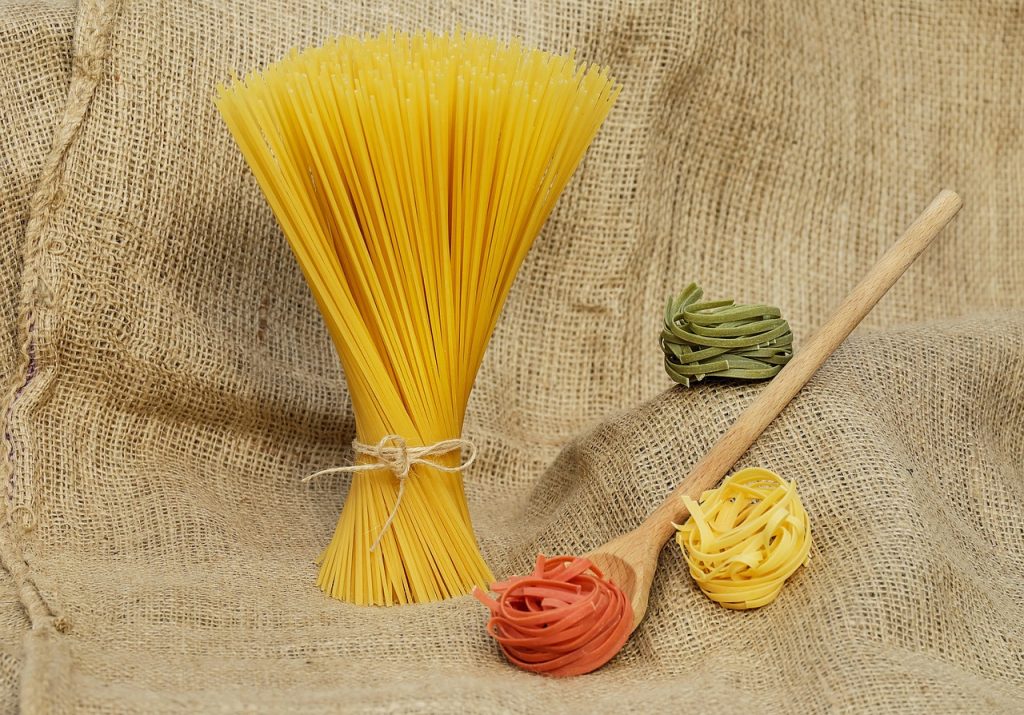
Consistency of Bolognese Sauce
Bolognese sauce is renowned for its luxurious and velvety consistency, which coats the pasta with a creamy richness and imparts a silky smoothness to each bite. The consistency of Bolognese sauce is achieved through a combination of ingredients and cooking techniques:
- Finely Minced Meat: Unlike ragù, which may contain coarsely chopped or shredded pieces of meat, Bolognese sauce features finely minced beef, pancetta, and aromatic vegetables. This results in a smoother texture with smaller meat particles distributed evenly throughout the sauce.
- Incorporation of Milk or Cream: One of the distinguishing features of Bolognese sauce is the inclusion of milk or cream, which adds richness and creaminess to the sauce. The dairy components help to mellow the acidity of the tomatoes and create a velvety texture that coats the pasta with luxurious indulgence.
- Long Simmering Time: Bolognese sauce is simmered slowly over low heat for an extended period, allowing the flavors to meld together and the sauce to thicken to the desired consistency. This gradual reduction of liquids and evaporation of moisture intensifies the flavors and creates a silky smooth sauce with a luxurious mouthfeel.
- Incorporation of Tomato Paste: Bolognese sauce often includes tomato paste, which is caramelized slightly during cooking to intensify the tomato flavor and deepen the color of the sauce. The addition of tomato paste helps to achieve a rich and robust sauce with a velvety smoothness that complements the pasta perfectly.
Impact on Overall Dish
The texture and consistency of ragù and Bolognese sauce play a crucial role in shaping the overall dining experience and enhancing the enjoyment of the dish. Here’s how each sauce impacts the overall dish:
- Ragù: The hearty and rustic texture of ragù adds depth and substance to pasta dishes, providing a satisfying mouthfeel and a robust flavor profile. The tender chunks of meat, thickened sauce, and aromatic vegetables create a comforting and soul-warming dish that is perfect for chilly evenings or cozy family dinners.
- Bolognese Sauce: The luxurious and velvety consistency of Bolognese sauce imparts a sense of indulgence and elegance to pasta dishes, elevating them to gourmet status. The creamy richness of the sauce, combined with the finely minced meat and silky smooth texture, creates a decadent dining experience that is both comforting and sophisticated.
Overall, whether you prefer the hearty texture of ragù or the silky smoothness of Bolognese sauce, both sauces contribute to the overall enjoyment of pasta dishes, providing a deliciously satisfying meal that is sure to delight your taste buds and warm your soul.
Ragù and Bolognese Sauce–Flavor Profile
The flavor profile of ragù and Bolognese sauce is influenced by a variety of factors, including the choice of ingredients, cooking techniques, and regional variations. While both sauces share some similarities in terms of their savory and aromatic qualities, they also exhibit distinct flavor characteristics that set them apart. Let’s delve into the flavor profiles of each sauce:
Flavor Characteristics of Ragù
Ragù is renowned for its rich and robust flavor profile, which is characterized by layers of savory goodness and aromatic complexity. The following are key flavor characteristics of ragù:
- Umami Richness: Ragù boasts a deep and satisfying umami flavor derived from slow-cooked meats, such as beef, pork, and veal. The long simmering process allows the meats to tenderize and release their natural juices, infusing the sauce with meaty richness and depth.
- Tomato Infusion: While not as pronounced as in some other tomato-based sauces, ragù incorporates the sweetness and acidity of tomatoes, which add brightness and balance to the overall flavor profile. Tomatoes provide a subtle backdrop for the rich meaty flavors, enhancing the complexity of the sauce without overwhelming it.
- Aromatic Intensity: The inclusion of aromatic vegetables such as onions, carrots, and celery contributes to the complexity of ragù’s flavor profile. These vegetables are finely diced and sautéed to develop their natural sweetness and fragrance, infusing the sauce with layers of aromatic depth.
- Herbal Notes: Ragù often incorporates aromatic herbs such as bay leaves, thyme, and rosemary, which add herbal complexity and earthy undertones to the sauce. These herbs complement the savory flavors of the meat and vegetables, creating a harmonious blend of flavors.
- Subtle Sweetness: Ragù may contain a hint of sweetness, derived from caramelized onions, carrots, and tomatoes, which balances the savory and acidic components of the sauce. This subtle sweetness adds depth and complexity to the overall flavor profile, enhancing the dining experience.
Flavor Profile of Bolognese Sauce
Bolognese sauce is celebrated for its luxurious and velvety flavor profile, characterized by creamy richness and subtle nuances. The following are key flavor characteristics of Bolognese sauce:
- Creamy Indulgence: Bolognese sauce distinguishes itself with its creamy texture and indulgent richness, imparted by the addition of milk or cream. The dairy components mellow the acidity of the tomatoes and create a velvety smoothness that coats the palate with luxurious indulgence.
- Balanced Savory Notes: Bolognese sauce features finely minced beef, pancetta, and aromatic vegetables, which contribute to its savory flavor profile. The meats are browned gently to develop depth of flavor, while the vegetables add aromatic complexity and sweetness to the sauce.
- Tomato Essence: Similar to ragù, Bolognese sauce incorporates tomatoes to add brightness and balance to the flavor profile. However, Bolognese sauce often includes tomato paste, which intensifies the tomato flavor and deepens the color of the sauce, while maintaining a subtle presence in the background.
- Hint of Nutmeg: Some variations of Bolognese sauce may include a hint of nutmeg, either grated fresh or ground, to add a subtle warmth and aromatic complexity to the sauce. The nutmeg enhances the overall flavor profile, complementing the savory and creamy elements with a touch of spice.
- Gentle Sweetness: Bolognese sauce may contain a gentle sweetness, derived from caramelized onions, carrots, and tomatoes, which adds depth and balance to the savory components of the sauce. This subtle sweetness enhances the overall flavor profile, creating a harmonious blend of flavors.
Differences in Taste
While both ragù and Bolognese sauce share common elements such as savory meats, aromatic vegetables, and tomatoes, they exhibit distinct differences in taste that reflect their unique flavor profiles:
- Umami vs. Creaminess: Ragù emphasizes umami-rich flavors derived from slow-cooked meats, while Bolognese sauce highlights creamy richness imparted by the addition of milk or cream.
- Aromatic Complexity: Ragù features a robust flavor profile with layers of aromatic intensity from onions, carrots, celery, and herbs, whereas Bolognese sauce offers a more subtle and nuanced aroma with hints of nutmeg and herbal undertones.
- Tomato Presence: While both sauces incorporate tomatoes, ragù relies more on the natural sweetness and acidity of fresh or canned tomatoes, whereas Bolognese sauce intensifies the tomato flavor with the addition of tomato paste, resulting in a richer and deeper flavor profile.
- Overall Sensory Experience: Ragù provides a hearty and comforting dining experience with its rustic texture and bold flavors, while Bolognese sauce offers a more indulgent and refined culinary experience with its creamy texture and subtle nuances.
Overall, the differences in taste between ragù and Bolognese sauce allow each sauce to shine in its own right, offering distinct culinary experiences that cater to different preferences and occasions. Whether you prefer the hearty simplicity of ragù or the luxurious elegance of Bolognese sauce, both sauces are sure to delight your palate and enhance your pasta dishes with their unique flavors and textures.
Ragù vs Bolognese Sauce–Cultural Significance
Ragù and Bolognese sauce are cultural symbols of Italian cuisine, representing tradition, heritage, and regional identity. Ragù is a staple in Italian households, symbolizing home cooking and a testament to the country’s rich culinary traditions. Its hearty nature makes it a beloved staple in Italian households, passed down through generations as a treasured family recipe.
Regional variations of ragù showcase the culinary diversity and ingenuity of each region, from the rich and meaty ragù alla bolognese of Bologna to the robust and flavorful ragù napoletana of Naples. Ragù is often crafted using seasonal ingredients sourced from local markets and farms, reflecting Italy’s deep connection to the land and its bountiful harvests.
Bolognese sauce occupies a special place in Italian culinary lore, revered for its refined elegance and timeless appeal. It is the pride of Bologna, where it originated and gained renown as a culinary masterpiece. Bolognese sauce has achieved global recognition and acclaim, earning a place on menus in restaurants and homes around the world.
Pairing with Pasta
Ragù, a hearty and robust pasta dish, pairs well with various pasta shapes that can hold up to its rich sauce. Traditional pasta pairings for ragù include tagliatelle, pappardelle, fettuccine, and gnocchi. Tagliatelle’s flat, ribbon-like shape provides ample surface area for the sauce to cling to, while pappardelle’s wider, broad noodles offer a substantial bite and a generous canvas for showcasing the sauce’s rich flavors. Fettuccine’s long, flat shape and substantial texture make it an ideal pairing for ragù, allowing the sauce to coat each strand evenly. Gnocchi’s soft and pillowy texture pairs surprisingly well with ragù, creating a comforting and hearty dish perfect for chilly evenings or special occasions.
Bolognese sauce, with its creamy texture and subtle nuances, pairs beautifully with various pasta types. Fettuccine’s broad, flat shape and silky texture make it an excellent choice for serving with Bolognese sauce, creating a luxurious and satisfying dish perfect for special occasions or romantic dinners. Pappardelle, similar to fettuccine but wider, offers a generous canvas for showcasing the creamy richness of Bolognese sauce. Rigatoni’s sturdy tubular shape and ridged texture make it an ideal pairing for Bolognese sauce, capturing the creamy sauce and creating a delightful explosion of flavor with each bite. Garganelli, a tubular pasta with ridges and rolled edges, offers a unique texture that pairs beautifully with Bolognese sauce.
Complementary flavors and ingredients can enhance the overall taste and texture of both ragù and Bolognese sauce. Garnishing with freshly grated Parmesan cheese adds a salty and nutty flavor to both dishes, while fresh herbs like basil, parsley, or oregano add a pop of freshness and aroma. Red pepper flakes add a subtle kick to ragù and Bolognese sauce, elevating their flavor profile and adding depth and complexity.
In recognition of its cultural importance and culinary heritage, Bolognese sauce has been granted protected status by the Italian government. The authentic recipe for ragù alla bolognese is enshrined in the official guidelines established by the Accademia Italiana della Cucina, ensuring that the sauce is prepared and served in accordance with tradition.
Ragù and Bolognese sauce have had a profound influence on Italian cuisine, inspiring countless variations and interpretations of the classic recipe. Regional variations of ragù include ragù alla napoletana from Naples, which features a rich and flavorful sauce made with tomatoes, onions, garlic, and a variety of meats such as beef, pork, and sausage.
Ragù and Bolognese Sauce–Nutritional Content
Ragù and Bolognese sauces are both rich in protein, carbohydrates, fats, vitamins, and minerals. Ragù is a hearty meat sauce with ground meats, tomatoes, aromatic vegetables, and herbs, providing essential protein for muscle growth, repair, and overall health. Its moderate carb content provides energy for the body and is an important part of a balanced diet.
Bolognese sauce, known for its creamy texture and rich flavor, is made from ground beef, tomatoes, milk or cream, and aromatic vegetables. It also contains carbohydrates from ingredients like tomatoes and onions, but the overall carb content is moderate. Fats, which are higher in calories compared to protein and carbohydrates, are essential for nutrient absorption and hormone production. Vitamins and minerals found in vegetables and herbs play important roles in immune health and bone strength.
However, both sauces can be calorie-dense, especially when served with large portions of pasta or high-calorie sides like garlic bread or cheese. To maintain a well-rounded diet, it is important to practice portion control and balance meals with plenty of vegetables and whole grains. Store-bought or pre-packaged versions of ragù and Bolognese sauce may contain high levels of sodium for flavor enhancement and preservation. Opting for homemade versions allows you to control the amount of salt added and reduce overall sodium intake.
Fats in both sauces are essential for a healthy diet, but it is important to choose sources of unsaturated fats like olive oil and incorporate them in moderation. Nutrient density is another important factor to consider when consuming these sauces. Overall, while ragù and Bolognese sauces are nutritious components of a balanced diet, it is crucial to consider their nutritional value and health implications.
Ragù and Bolognese Sauce–Versatility in Cooking
Ragù and Bolognese sauce are versatile ingredients that can be used in various culinary applications beyond pasta sauce. They offer rich flavors and hearty textures, making them excellent ingredients for creating a wide range of delicious dishes. Ragù is a classic filling for lasagna, layered with pasta, creamy béchamel sauce, and grated cheese. It complements the cheesy goodness of lasagna, creating a comforting and indulgent dish.
Stuffed vegetables like bell peppers, zucchini, or eggplant can be filled with ragù, top with cheese, and baked until tender. Ragù can also be used as a topping for homemade pizza, adding depth and richness to the classic Italian dish. It pairs beautifully with rice or polenta, providing a hearty and flavorful accompaniment to starchy staples.
Bolognese sauce can be used as a gourmet topping for burgers, stuffed pasta dishes, meatball subs, and vegetable stir-fries. It adds depth and richness to classic sandwiches, while also being a versatile ingredient for vegetarian versions. For vegetarians, plant-based alternatives like lentils, mushrooms, or tofu provide protein and texture while still delivering delicious flavor. Gluten-free options include gluten-free pasta or alternative grains like quinoa or rice.
Both ragù and Bolognese sauce are highly adaptable and can be customized to suit taste preferences and dietary needs. For vegetarian versions, plant-based alternatives like lentils, mushrooms, or tofu can be used, while gluten-free pasta or alternative grains like quinoa or rice can be used. Be sure to check the labels of any packaged ingredients to ensure they are safe for consumption.
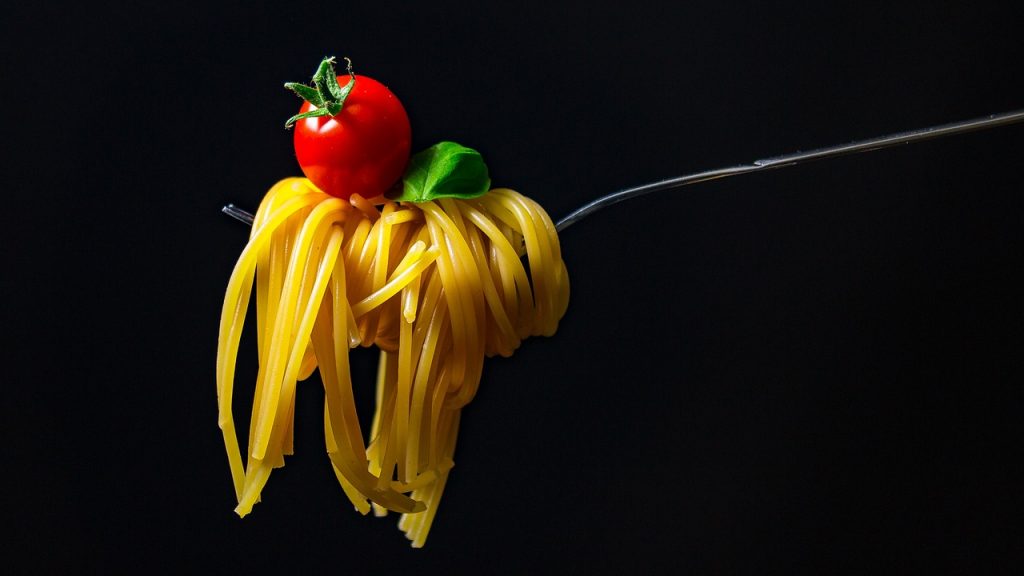
Popularity and Preferences
Ragù, a staple of Italian cuisine, varies across different regions due to local culinary traditions, ingredient availability, and cultural preferences. Some regional variations include Ragù alla Bolognese (Bologna), Ragù Napoletana (Naples), Ragù alla Siciliana (Sicily), and Ragù Toscano (Tuscany).
Ragù alla Bolognese is the most famous variation, featuring finely minced beef or a combination of beef and pork cooked slowly with tomatoes, onions, carrots, celery, and sometimes pancetta. It is traditionally served with tagliatelle pasta and is known for its velvety texture and depth of flavor. Ragù Napoletana is characterized by its intense tomato flavor and the inclusion of various meats such as beef, pork, and sausage. It is typically served with pasta like spaghetti or rigatoni and is a favorite comfort food in the region.
Ragù alla Siciliana is a variation popular in Sicily, known for its bold flavors and Mediterranean influences. It often includes eggplant, olives, capers, raisins or pine nuts for added sweetness and texture. Ragù alla Siciliana is served with pasta or used as a filling for dishes like arancini (stuffed rice balls).
Bolognese sauce, also known as ragù alla Bolognese, has gained immense popularity worldwide due to its rich and savory flavor profile and versatility in culinary applications. Factors influencing preference include Italian cuisine’s global influence, adaptability in cooking, family-friendly appeal, and ease of preparation.
Individuals’ preferences for ragù and Bolognese sauce are influenced by their cultural background, personal taste preferences, and dietary considerations. Cultural backgrounds and culinary traditions play a significant role in shaping individuals’ tastes and preferences for ragù and Bolognese sauce.
Comparison in Taste and Texture
Ragù and Bolognese sauce are two distinct sauces that offer unique taste experiences. Ragù is known for its deep umami flavor, derived from slow-cooked meats like beef, pork, or veal. It incorporates the sweetness and acidity of tomatoes, adding brightness and balance to the overall flavor profile. It features a complex blend of aromatics such as onions, carrots, celery, and herbs, contributing to its depth of flavor and aromatic intensity. Aromatic herbs like bay leaves, thyme, and rosemary are often used in ragù, adding earthy undertones and herbal complexity.
Bolognese sauce, on the other hand, distinguishes itself with its creamy texture and indulgent richness, imparted by the addition of milk or cream. It features finely minced beef, pancetta, and aromatic vegetables, contributing to its savory flavor profile. The sauce incorporates tomatoes for brightness and acidity, but in a more subdued manner compared to other tomato-based sauces. Some variations of Bolognese sauce include a hint of nutmeg, adding warmth and aromatic complexity to the sauce.
Both sauces also exhibit distinct textural characteristics. Ragù has a chunkier texture with visible pieces of meat and vegetables, providing a hearty and rustic feel. The sauce coats pasta evenly, delivering bursts of flavor with each bite. Bolognese sauce has a smoother and creamier texture, thanks to the addition of milk or cream.
Personal preferences for ragù and Bolognese sauce often come down to individual taste preferences and culinary experiences. Some people may prefer the robust and savory flavors of ragù, while others may gravitate towards the creamy richness of Bolognese sauce. Factors such as upbringing, cultural background, and exposure to different cuisines can also influence personal preferences.
Ultimately, whether you prefer the hearty simplicity of ragù or the creamy elegance of Bolognese sauce, both sauces offer delicious taste experiences that celebrate the rich culinary heritage of Italian cuisine. Experimenting with different recipes and variations allows you to discover your own personal favorite and tailor it to suit your taste preferences.
Which One is Better?
The choice between ragù and Bolognese sauce is subjective and influenced by individual taste preferences, culinary traditions, and texture preferences. Both sauces have unique characteristics and appeal to different palates. Factors to consider include flavor preference, texture preference, cultural background, cooking skills, health considerations, and availability of ingredients.
Flavor preference refers to the robust, meaty flavors of ragù, while texture preference is influenced by the texture you enjoy most in a pasta sauce. Cultural background may influence your preference, as some people may lean towards ragù or Bolognese sauce based on regional or family traditions. Cooking skills may also play a role, with some preferring simplicity and slow-cooking methods, while others enjoy the creativity and versatility of Bolognese sauce.
Health considerations may also influence your choice, with vegetarians or lactose intolerance individuals may prefer meatless or dairy-free versions of either sauce. Availability of ingredients in your area and access to fresh produce and meats may also influence your choice.
In conclusion, there is no definitive answer to which sauce is “better,” as it is a matter of personal preference and individual taste. Both ragù and Bolognese sauce are beloved components of Italian cuisine, offering a delicious taste experience that celebrates the rich flavors and culinary heritage of Italy. Experimenting with both sauces and exploring different recipes can help discover which one resonates most with your palate and culinary style.
Conclusion
Ragù and Bolognese sauce are two iconic Italian sauces with distinct characteristics and culinary appeal. Both have rich culinary histories rooted in Italian tradition, with ragù originating from various regions across Italy and Bolognese sauce famously hailing from Bologna. Ragù often features slow-cooked meats and a variety of vegetables, while Bolognese sauce incorporates a creamy base and finely minced meats.
Raghu tends to have a chunkier texture with robust, meaty flavors and a deep umami richness, while Bolognese sauce offers a smoother, creamier texture with balanced savory notes and a touch of sweetness. Ragù holds cultural importance in Italian cuisine, with regional variations showcasing diverse ingredients and flavors. Bolognese sauce has gained global popularity and is enjoyed in various countries due to its adaptability and comforting appeal.
Choosing between ragù and Bolognese sauce ultimately comes down to personal taste preferences, culinary traditions, and specific preferences for flavor and texture. Both sauces offer versatility in cooking and can be adapted to suit individual dietary needs and preferences.
In conclusion, there is no definitive winner between ragù and Bolognese sauce, as both offer unique and delicious taste experiences that celebrate the rich culinary heritage of Italy. Exploring different recipes, experimenting with variations, and embracing the culinary diversity of Italian cuisine allows you to discover which sauce resonates most with your palate and brings joy to your dining experience.
FAQ
- Can I use ground turkey instead of beef in ragù or Bolognese sauce?
- Yes, ground turkey can be substituted for beef in both sauces, although it may alter the flavor slightly.
- What is the best wine to use in Bolognese sauce?
- A dry red wine like Chianti or Sangiovese is commonly used in Bolognese sauce for its robust flavor.
- Can I freeze ragù or Bolognese sauce for later use?
- Yes, both sauces freeze well and can be stored in the freezer for up to three months.
- Are there vegetarian versions of ragù and Bolognese sauce?
- Yes, vegetarian alternatives to both sauces can be made using plant-based proteins like lentils or mushrooms.
- What is the traditional pasta shape for serving Bolognese sauce?
- Tagliatelle is the traditional pasta shape for serving Bolognese sauce, although other broad pasta varieties work well too.

